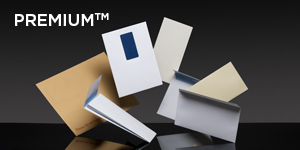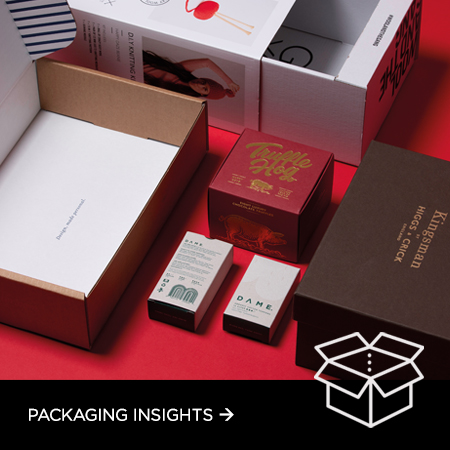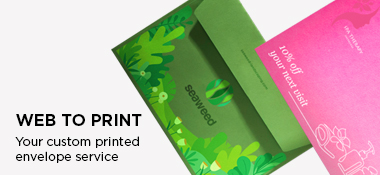SCHOOLS OF OPINIONS
THE POWER OF DM
65% of respondents said they gave mail their full attention, compared with only 35% who said the same for email.
70% stated that receiving mail created a better impression of the company in comparison to
receiving email.
Addressed advertising mail stays in the home for an average of 17 days
70% feel more valued when they receive mail.
Taken from MailMen’s ‘The Value of Mail in Uncertain Times’ 2017
Did you know, people value something 24% more highly when they can see and touch it, rather than just see it?
7 out of 10 people prefer to receive legal or banking information in the form of a letter. Just over one quarter of us are happy to receive such information via email. Less than 1% think a phone call or text message appropriate for formal communications.
Almost 50% of people prefer to receive sales information via a letter or brochure, closely followed by email, cited by 42.8%. Less than 7% like to receive sales information face-to-face.
A majority (57%) say that receiving mail makes them feel more valued; only 17% feel the same about email.
Almost two thirds (63%) of consumers take mail more seriously than email.
People who receive bank statements through the post are more than twice as likely to correctly identify how much money is in their account as those who receive statements online (82% vs 32%)
Direct marketing campaigns that include mail are 27% more likely to deliver top-ranking sales performance, and 40% more likely to deliver top-ranking customer acquisition levels than campaigns without mail.
An average of 23% of all mail is shared between people in a household. 21% of promotions and special offers are shared.
Mail is kept in a household for an average of 17 days for advertising mail, 38 days for door drops and 45 days for bills and statements.
Taken from "Reasons to love mail" PRINT.IT, Spring 2015
SHARING THE LOVE
In shared households 35% of promotional mail is passed on to others. Since the inhabitants of shared households tend to be younger, this has particular implications for mail. We have already found evidence that 15-34 year olds are:
42% more likely to find mail memorable than the UK population as a whole.
Mail also moves from person to person. Our follow-up survey identified that almost a quarter of mail (23%) is shared in a household – allowing for wider exposure of your brand message to new audiences.
Campaigns including mail were 27% more likely to deliver top-ranking sales performance and 40% more likely to deliver top-ranking acquisition levels than campaigns that didn’t.
When mail is added to a multi-channel campaign, with a longevity and impact higher than that of email, we could identify that 13% more consumers visited the sender’s website, 21% more consumers made purchases and 35% more consumers redeemed coupons or vouchers.
Taken from "The Private Life of Mail" by Royal Mail Market Research
COMMAND ATTENTION
"Printed mail grabs attention, is considered and informative, makes recipients feel valued and gives a better impression"
Consumers actually read the direct mail that arrives in their mailboxes. 79% of households say they either read or scan retailers’ advertising mail, according to the 2012 U.S. Postal Service.
“Direct mail has more impact as name brand recognition increases”
“After a few years of building up the brand we decided to see if direct mail might work”
Entin then examined the site’s traffic before, during and after the mailing, to see if the postcards led to a bump. In the first two or three days after the postcards arrived in recipients’ mailboxes traffic was almost double that of a typical day. Traffic ran about 50% higher than normal for a week before subsiding.
Taken from "A new wave of marketers are using direct mail to generate traffic" by Scott Palmer on LinkedIn
"Compared with other media, mail recipients experienced higher levels of emotional engagement and remembered more"
In today’s media landscape, brands and consumers are communicating in more diverse ways that ever before. We wanted to discover the role that mail played in this new media ecosystem.
One of the most interesting findings came from a neuroscience study. Using a proven technique call Steady State Topography, we wanted to assess the impact mail has on the specific areas of brain functions that are known to correlate strongly with purchase and other commercial outcomes.
These are engagement, emotional intensity and long-term memory encoding.
We found that, compared with other media, mail recipients experienced higher levels of emotional engagement and remembered more. We also found that this effect was more pronounced if people had seen other communications from the brand before receiving the message. Behavioural economists call this effect priming.
These findings make intuitive sense to us as consuming mail can be regarded as an immersive and tactile experience. Indeed, our findings appear to us to be broadly in line with other studies that suggest, for example, that children retain more information if they read on a printed page than on a screen and a similar recent neuroscience study has been conducted by Twitter.
Of course, we understand that ROI is important. That is why The Private Life of Mail contains more than one analysis that demonstrates that campaigns that include mail in the mix deliver a stronger return than those that do not.
Taken from "Mail Recipients experience a greater level of engagement" Jonathan Harman, Managing Director of Royal Mail MarketReach
"Picking up a pen and paper can be therapeutic"
A recent New York Times article paid respect to the lost but found art of thank you notes. They’re right: sending a quick text of thanks does not fully express gratitude, nor is it as rewarding as writing a thank you note.
Making the extra effort to say thanks in a genuine, personal manner goes a long way.
It is pleasurable to do, and it encourages more of the same good behavior. In an age where most of us are staring at screens for most of the day, picking up a pen and paper and really thinking about what you have to be thankful for can be therapeutic too.
Taken from "Why we should all send more thank you letters" by Sir Richard Branson
Sending cards to your business contacts reminds them who you are and what you do. Receiving your card will ensure your client knows you are taking a personal interest in them. It demonstrates that you value their custom and believe they are important to your business. Think about dropping one sales mailing and send a non-sales greeting card. I would like to bet you generate more goodwill and feedback from the greetings card! Good business is done via good relationships. People like to be set apart from others and appreciated for their custom and loyalty. Good customer service will always win over price with the right customers.
Taken from "Business Benefits From Sending Bespoke Christmas Cards"
THAT PERSONAL TOUCH
"Emails can be deleted, dismissed or even end up in your junk mail folder. But a postcard arrives with a clatter through your letterbox and has that personal touch: it has been written by hand, a stamp has been bought and stuck to it, and of course it has been carefully selected by the sender."
Written by Harry Mottram for Print Monthly July 2014 Edition
THERE IS NOTHING MORE SPECIAL THAN A HANDWRITTEN NOTE.
Calligrapher Sandra Grayson, who is self taught, put pen to paper at the London Stationery Show to show visitors to the Manuscript stand just how beautiful handwriting can be. (www.calligraphy.co.uk)
"There is nothing more special than a handwritten note," she said. "I taught myself how to write like this and I get pleasure from every single letter."
Taken from Stationery magazine
PEOPLE ARE SENDING MORE CARDS THAN EVER BEFORE
The greetings card industry is brushing off the threat from online, according to the chief executive of high street chain Paperchase, Tim Melgund.
"People are sending more cards than every before. The price of a card is nothing compared to a cup of coffee but people value the time and effort it takes to write and send a card."
Written by Alex Lawson for The Independent
CONSUMERS ARE MORE LIKELY TO DEAL WITH DIRECT MAIL IMMEDIATELY, COMPARED TO EMAIL.
79% of consumers will act on direct mail immediately compared to only 45% who say they deal with email straightaway, research from the Direct Marketing Association (DMA) has found. Rachel Aldighieri, director of communications and insight at the DMA, said:
"People continue to value direct mail and printed communications from brands, finding that it plays a seamless role within their connected worlds, offers some qualities not found in other comms and is an essential part of the overall 'brand experience'."
Written by Ishbel Macleaod for The Drum®




















 Black
Black Purple
Purple Blue
Blue Red
Red Green
Green Yellow
Yellow Grey
Grey White
White Pink
Pink Cream
Cream Brown
Brown Navy
Navy Violet
Violet Lime
Lime Orange
Orange










